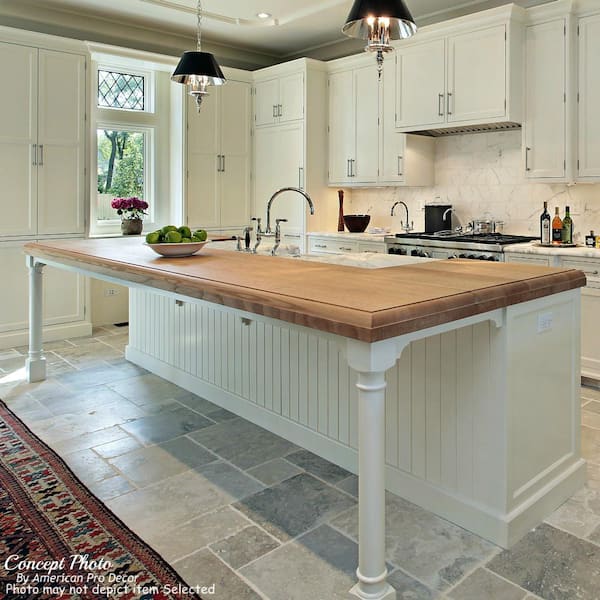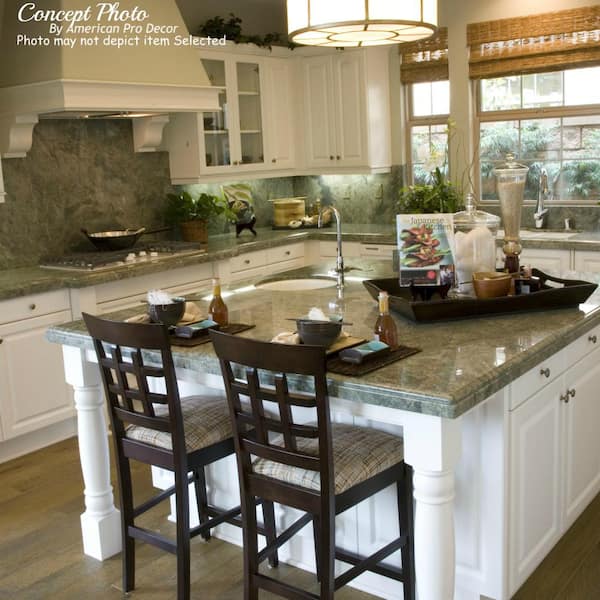Just how to Integrate a Kitchen Island Leg right into Your Kitchen Remodel
Just how to Integrate a Kitchen Island Leg right into Your Kitchen Remodel
Blog Article
The Significance of a Sturdy Kitchen Area Island Leg in Creating a Practical Food Preparation Area
A durable kitchen area island leg serves as a fundamental component in establishing a useful cooking setting, supplying needed support for both the counter top and numerous kitchen activities. As kitchen areas develop right into multifunctional areas for cooking, dining, and mingling, the option of materials and design factors to consider for island legs becomes increasingly essential.
Benefits of Sturdy Island Legs
Supplying important support, sturdy kitchen island legs play a pivotal function in improving the functionality and toughness of kitchen islands - kitchen island leg. These legs not just bear the weight of the counter top and any kind of added things put on the island, however also contribute to the total security of the structure. A well-supported cooking area island makes sure that it stays functional and upright, also under hefty usage, which is particularly crucial in hectic kitchen settings
In addition, durable island legs can enhance the aesthetic allure of the cooking area. They give a strong structure that can enhance different layout styles, from modern to conventional. This adaptability allows home owners to customize their kitchen area islands according to individual preference while ensuring that the structural honesty stays uncompromised.
In addition to their supportive function, durable cooking area island legs can also improve security. Ultimately, investing in tough kitchen area island legs is essential for a useful and aesthetically pleasing cooking location.
Products for Kitchen Area Island Legs
When selecting products for kitchen island legs, resilience and visual appeal are essential variables to take into consideration. The most common materials include hardwood, metal, and crafted wood, each offering distinct benefits.
Hardwood, such as oak, maple, or cherry, is a timeless selection due to its stamina and ageless beauty (kitchen island leg). It can hold up against significant weight and is immune to wear, making it ideal for high-use cooking area settings. Furthermore, hardwood can be tarnished or repainted to enhance numerous cooking area designs
Metal legs, often crafted from stainless steel or functioned iron, give a industrial and modern look. They are unbelievably solid and can sustain considerable tons while being resistant to moisture and warm, which is helpful in a cooking area. Metal legs can additionally be easily cleaned, enhancing their functionality.

Design Factors To Consider for Stability
The option of materials for kitchen island legs straight affects the design factors to consider for security. When developing a kitchen island, it is extremely important to review the weight-bearing ability of the selected products. Much heavier products, such as solid timber or metal, normally give greater security, especially under the tension of day-to-day usage.
Additionally, the leg design must integrate appropriate geometry to improve stability. A larger base boosts the support location, minimizing the threat of tottering or tipping. Consideration should also be given to the height of the legs; disproportionate leg lengths can cause inequality, jeopardizing the overall security of the island.
Furthermore, the distribution of weight throughout the island is crucial. Making certain that the leg placement aligns with the heaviest elements, such as countertops and home appliances, will further boost security.
Maintenance Tips for Long Life

Cleansing is another important facet of maintenance. Depending on the product of the legs-- whether wood, metal, or composite-- appropriate cleansing techniques ought to be used. For wooden legs, a mild clean with a moist towel and an ideal timber cleaner will certainly help preserve their coating. Metal legs may call for a light gloss to avoid rust and preserve their appeal.
Furthermore, tightening screws and bolts routinely can make sure stability and stop wobbling. If the cooking area island experiences heavy use, consider reinforcing the legs with additional brackets or supports to improve toughness. Using a protective surface or sealant can safeguard against moisture and stains, prolonging the lifespan of the legs. By complying with these maintenance pointers, homeowners can ensure their kitchen island legs remain durable and functional for many years ahead.
Choosing the Right Leg Style
Regular upkeep makes sure that article source kitchen area island legs stay durable and useful, but selecting the appropriate leg style is equally vital for both appearances and support. The choice of leg design can dramatically influence the overall design and harmony of your cooking area.

Functionality is an additional essential element. For circumstances, thicker legs or those with a durable base can support much heavier kitchen counters and devices, improving the island's utility. Conversely, slender legs may develop a ventilated appearance, appropriate for lighter styles but possibly much less encouraging.
Final Thought
In recap, the importance of durable cooking area island legs can not be overemphasized in the development of a practical food preparation location. These legs provide important assistance, boost you can check here stability, and add to the overall visual of the kitchen area.
A strong cooking area island leg offers as a fundamental part in establishing a useful cooking environment, offering needed assistance for both the countertop and different kitchen activities.Supplying vital support, sturdy kitchen area island legs play a crucial duty in improving the capability and toughness of kitchen area islands. Ultimately, spending in strong kitchen area island legs is important for a practical and aesthetically pleasing cooking area.
Factor to consider needs to also be given to the height of the legs; disproportionate leg sizes can lead to inequality, compromising the total security of the island.
Wood legs give warmth and a classic appearance, while metal legs supply a modern-day and commercial feel.
Report this page